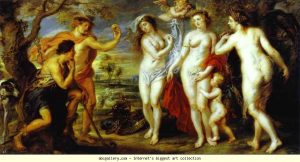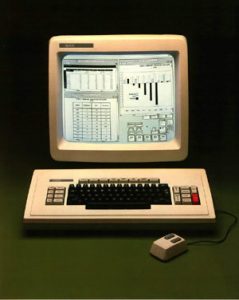Faraday: Unification of Paradigm
 Michael Faraday: Electricity
Michael Faraday: Electricity
Electracy (the term) joins electricity and trace to name the digital apparatus. Michael Faraday made a major contribution to the science and technology of electracy (he is considered to be the first electrical engineer). His work exemplifies a principle of heuretics regarding the transdisciplinary character of creativity. His discovery of the unity of electricity and magnetism was guided by a themata (Holton)–the unification of all forces in the cosmos–which directed his empirical work. The following passage holds a place for further discussion.
But Faraday was not wholly without philosophical intent. As a young man, he became enamored of a version of Kant’s philosophy extolled with great force by the poet Samuel Taylor Coleridge. It was based on the universe being filled with a web of attractive and repulsive forces, convertible one into the other, with their total being conserved. At the bottom, this cosmic web was woven by God. Everything is here in nascent form, including forces to fill the vacuum, as well as conservation of energy. Faraday was particularly taken by Coleridge’s statement that “Things identical must be convertible.” He believed a relation between electrical and magnetic forces had to exist. As Faraday’s biographer L. Pierce Williams writes, “It was the conviction that forces were inherently identical and convertible that inspired Michael Faraday during the major portion of his scientific career.” (Arthur I. Miller, Insights of Genius: Imagery and Creativity in Science and Art, MIT Press, 2000: 102).
The immediate point to register is to extend the unification of forces (energy) into the cultural and human realm, with respect to the axis of attraction-repulsion as organizing electracy, including the libidinal economy of desire. An abstract of an essay by Williams notes a further correlation of Faraday with the metaphysics structuring konsult as pedagogy: Capabilities.
This chapter focuses on epistemology and the experimental methods used by Michael Faraday. The methods of all sciences are identical. These methods include observation of facts, comparison and classification of facts, deduction of facts, and verification of results. Science guided Faraday throughout his life. It must have infuriated his contemporaries that the foremost experimentalist of the nineteenth century rejected the prevalent theories of experimental method. In fact, Faraday’s scientific career was founded upon a rather simple, but fundamentally important, concept of the mind and its faculties. The mind consists of basically three faculties—the senses, the judgment, and the imagination. The senses provide the mind with the raw material for its operations but this is not automatic or mechanical. The mind has to be carefully trained in the reception of sense impressions or else it will err in its judgments. (“Epistemoloogy and Experiment: the Case of Michael Faraday,” Studies in Logic and the Foundations of Mathematics, Vol 49, 1968).

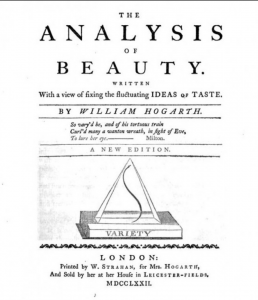 A second affiliation with tradition important to note in this seminar is Lacan’s reference to Hogarth’s curved line of beauty as relevant to the genealogy of his knot topology. This connection makes explicit Lacan’s contribution to the larger question of the gramme, the invention of the plasmatic line in the Paleo apparatus, in continuing service up to the present, now augmented in electracy through animation and digital FX. Sergei Eisenstein cited Disney’s animated film, Steamboat Willie (1928) as a revelation of the new order opened up in media by the plasmatic line. We will have more to say about the ontological properties of this line.
A second affiliation with tradition important to note in this seminar is Lacan’s reference to Hogarth’s curved line of beauty as relevant to the genealogy of his knot topology. This connection makes explicit Lacan’s contribution to the larger question of the gramme, the invention of the plasmatic line in the Paleo apparatus, in continuing service up to the present, now augmented in electracy through animation and digital FX. Sergei Eisenstein cited Disney’s animated film, Steamboat Willie (1928) as a revelation of the new order opened up in media by the plasmatic line. We will have more to say about the ontological properties of this line.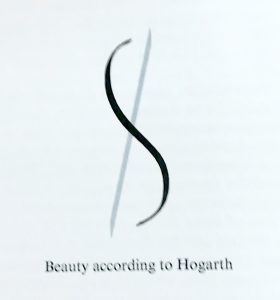
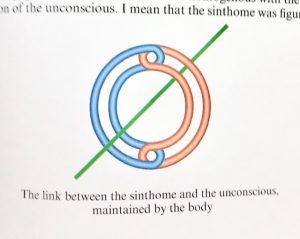
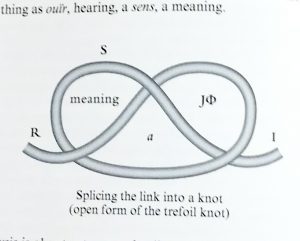
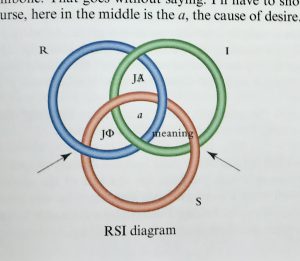
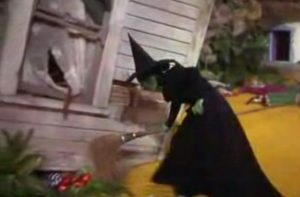 –Scenario. Assuming familiarity with the synopsis of the narrative, we may outline the allegorical import. In general the narrative is instructive of mystorical design in that there is an isotopic rhyming between Dorothy’s world in Kansas and the fantasy world of Oz. The encounter of these two orders is dramatized when Dorothy’s house lands in Oz, crushing the Wicked Witch of the East, whose red shoes Dorothy inherits. The tornado that interrupted a family crisis in Kansas represents Disaster. Dorothy is egent, or soul (psyche) in the allegory, and her journey to find the Wizard to get his advice dramatizes the egent’s actualization of her capabilities in theopraxesis. The three capabilities (virtues, faculties) are represented by the three companions Dorothy meets along the way, the Yellow Brick Road. The three figures embody the significance of the lack articulated in the term “egent” (they lack). The three companions represent the three virtues in a state of privation, Steresis, potentiality not realized (im/potence). Their impotence is a projection of Dorothy’s virtuality, her lack, the condition of any ephebe on the way. The three figures manifest the tripartite system of virtues, but Baum euphemized the assignments somewhat, blending heart and gut. In our appropriation of the story for konsult allegory the alignment with the tradition is clear: Scarecrow wants a brain (Knowledge, Theoria, Head, Rulers); Lion wants courage, so heart (Will, Praxis, Guardians); Tin Woodman’s problem is not his “heart” but his “axe” (enchanted by the witch), which prevents him from loving (having sex). He represents Viscera (Desire, Poiesis, Workers).
–Scenario. Assuming familiarity with the synopsis of the narrative, we may outline the allegorical import. In general the narrative is instructive of mystorical design in that there is an isotopic rhyming between Dorothy’s world in Kansas and the fantasy world of Oz. The encounter of these two orders is dramatized when Dorothy’s house lands in Oz, crushing the Wicked Witch of the East, whose red shoes Dorothy inherits. The tornado that interrupted a family crisis in Kansas represents Disaster. Dorothy is egent, or soul (psyche) in the allegory, and her journey to find the Wizard to get his advice dramatizes the egent’s actualization of her capabilities in theopraxesis. The three capabilities (virtues, faculties) are represented by the three companions Dorothy meets along the way, the Yellow Brick Road. The three figures embody the significance of the lack articulated in the term “egent” (they lack). The three companions represent the three virtues in a state of privation, Steresis, potentiality not realized (im/potence). Their impotence is a projection of Dorothy’s virtuality, her lack, the condition of any ephebe on the way. The three figures manifest the tripartite system of virtues, but Baum euphemized the assignments somewhat, blending heart and gut. In our appropriation of the story for konsult allegory the alignment with the tradition is clear: Scarecrow wants a brain (Knowledge, Theoria, Head, Rulers); Lion wants courage, so heart (Will, Praxis, Guardians); Tin Woodman’s problem is not his “heart” but his “axe” (enchanted by the witch), which prevents him from loving (having sex). He represents Viscera (Desire, Poiesis, Workers).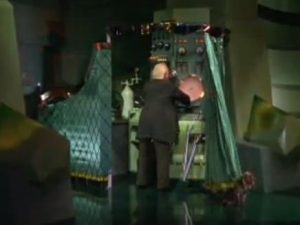 –Wizard. The scene of consultation with the Wizard, when Psyche and her three Capabilities make their requests, shows the full arrangement of apparati and their relationship at the collective level. In this expanded scene, the microcosm/macrocosm individual/collective isotopy is made explicit: Tin Man is Paleo (Family, sexual fertility), Lion is Oral (Church), Scarecrow is Literate (School), Wizard is Electrate (Entertainment). Much theory could be referenced here to support this configuration. To mention Lacan, for example, the Wizard is the Big Other, the one supposed to know, whose hold over us it is the purpose of therapy to dispel. The immediate value of the Oz allegory is to highlight this passage in education, the adventure of learning (dealing with the trials testing Psyche/Dorothy) as actualization of the three capabilities. Equally important is the fact that the Wizard is augmented capability, imagination mise-en-macbine, with the imperative of the allegory being for us to understand how Oz makes able, activates, the three virtues so Dorothy may return home (overcome disaster).
–Wizard. The scene of consultation with the Wizard, when Psyche and her three Capabilities make their requests, shows the full arrangement of apparati and their relationship at the collective level. In this expanded scene, the microcosm/macrocosm individual/collective isotopy is made explicit: Tin Man is Paleo (Family, sexual fertility), Lion is Oral (Church), Scarecrow is Literate (School), Wizard is Electrate (Entertainment). Much theory could be referenced here to support this configuration. To mention Lacan, for example, the Wizard is the Big Other, the one supposed to know, whose hold over us it is the purpose of therapy to dispel. The immediate value of the Oz allegory is to highlight this passage in education, the adventure of learning (dealing with the trials testing Psyche/Dorothy) as actualization of the three capabilities. Equally important is the fact that the Wizard is augmented capability, imagination mise-en-macbine, with the imperative of the allegory being for us to understand how Oz makes able, activates, the three virtues so Dorothy may return home (overcome disaster).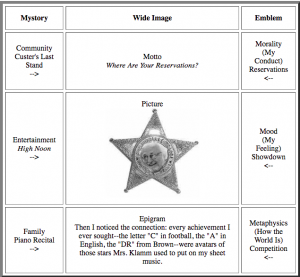 –Tenor (Themata): Catechism. The image on the left is the emblem Ulmer generated from his mystory, leading to design of his wide image in
–Tenor (Themata): Catechism. The image on the left is the emblem Ulmer generated from his mystory, leading to design of his wide image in 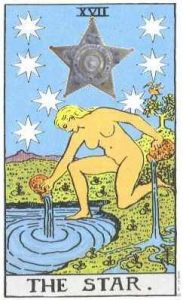 3) The third question is Mood: given the necessity to act in that way, in a world of that character, how do I feel? Wabi-Sabi advises acceptance of the inevitable and appreciation of the cosmic order. Ulmer found his state of mind expressed in High Noon as a fable of duty: despite his contempt for the hypocritical community, the sheriff fought the gang of killers, after which he threw away the tin star. This gesture of discarding the badge of status determined the tin star as the icon of the emblem. In practice it is best to decide which popcycle story supplies the picture, and which question of the catechism that story answers, and the rest of the emblem follows from there.
3) The third question is Mood: given the necessity to act in that way, in a world of that character, how do I feel? Wabi-Sabi advises acceptance of the inevitable and appreciation of the cosmic order. Ulmer found his state of mind expressed in High Noon as a fable of duty: despite his contempt for the hypocritical community, the sheriff fought the gang of killers, after which he threw away the tin star. This gesture of discarding the badge of status determined the tin star as the icon of the emblem. In practice it is best to decide which popcycle story supplies the picture, and which question of the catechism that story answers, and the rest of the emblem follows from there.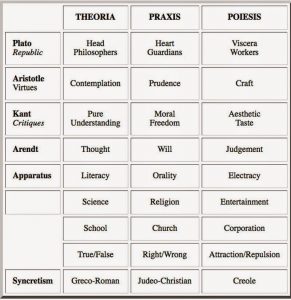
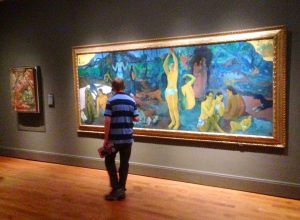 Capability. As these posts accumulate across an expanding set of categories, it is important to recall the focus of KE. Konsult learns the writing of the disaster in three dimensions: heuretics (invention), wide image (mystory), theopraxesis (capability). So far we have assumed some disaster addresses us, and devoted our attention to the heuretics of mystory, learning how to design an image of wide scope, source of our original hypothesis responding to disaster. Konsult takes up for electracy an ancient, even primordial drama: the striving to persist in one’s own being (to live), that Spinoza called Conatus, against the Overwhelming force of resistance, entropy, death. Heidegger characterized the drama as Riss, exploiting as was his craft German vocabulary, finding a term that means both Rift (split, break) and design (drawing). The drama of living derives from an irreducible opposition between Earth and World (nature and culture). Konsult is rift design (an assertion that must be developed elsewhere), taking up this enigmatic primordial experience of resistance encountered through living. Norbert Weiner, one of the inventors of cybernetics, defined life simply as anything that was negentropic, whether man or machine. We need to include in the drift of our posts a review of human capabilities, virtues, powers, the potentiality of egents which through education is realized in the service of well-being, thriving, living against disaster.
Capability. As these posts accumulate across an expanding set of categories, it is important to recall the focus of KE. Konsult learns the writing of the disaster in three dimensions: heuretics (invention), wide image (mystory), theopraxesis (capability). So far we have assumed some disaster addresses us, and devoted our attention to the heuretics of mystory, learning how to design an image of wide scope, source of our original hypothesis responding to disaster. Konsult takes up for electracy an ancient, even primordial drama: the striving to persist in one’s own being (to live), that Spinoza called Conatus, against the Overwhelming force of resistance, entropy, death. Heidegger characterized the drama as Riss, exploiting as was his craft German vocabulary, finding a term that means both Rift (split, break) and design (drawing). The drama of living derives from an irreducible opposition between Earth and World (nature and culture). Konsult is rift design (an assertion that must be developed elsewhere), taking up this enigmatic primordial experience of resistance encountered through living. Norbert Weiner, one of the inventors of cybernetics, defined life simply as anything that was negentropic, whether man or machine. We need to include in the drift of our posts a review of human capabilities, virtues, powers, the potentiality of egents which through education is realized in the service of well-being, thriving, living against disaster.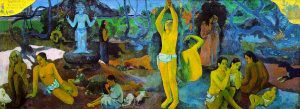
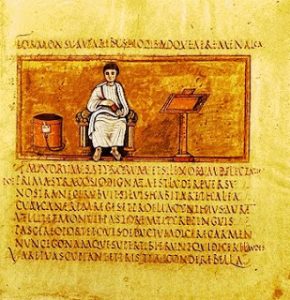 From Agent to Egent. These posts undertake a meandering trace of inquiry. KE reviews Ulmer’s work of the past four+ decades in order to understand it again, whole, as if given all at once, in a flash of insight. Egents undertaking konsult are interlocutors, collaborators, tutors. The purpose is to compose and design a discourse on method, in the tradition running from Plato’s Phaedrus to contemporary French philosophy, describing and testing a mode of learning native to electracy (the digital apparatus). The outline necessarily begins in literacy and school. The coming pedagogy is also explored elsewhere, in the context of EmerAgency (conceptual konsulting, without portfolio), addressing the curriculum reform in progress at MIT as well as Digital Humanities institutionalization. The discussion across disciplines concerns TPE (Theopraxesis)–a shared interest in learning how to learn in digital civilization, using heuretics, the logic of invention.
From Agent to Egent. These posts undertake a meandering trace of inquiry. KE reviews Ulmer’s work of the past four+ decades in order to understand it again, whole, as if given all at once, in a flash of insight. Egents undertaking konsult are interlocutors, collaborators, tutors. The purpose is to compose and design a discourse on method, in the tradition running from Plato’s Phaedrus to contemporary French philosophy, describing and testing a mode of learning native to electracy (the digital apparatus). The outline necessarily begins in literacy and school. The coming pedagogy is also explored elsewhere, in the context of EmerAgency (conceptual konsulting, without portfolio), addressing the curriculum reform in progress at MIT as well as Digital Humanities institutionalization. The discussion across disciplines concerns TPE (Theopraxesis)–a shared interest in learning how to learn in digital civilization, using heuretics, the logic of invention.